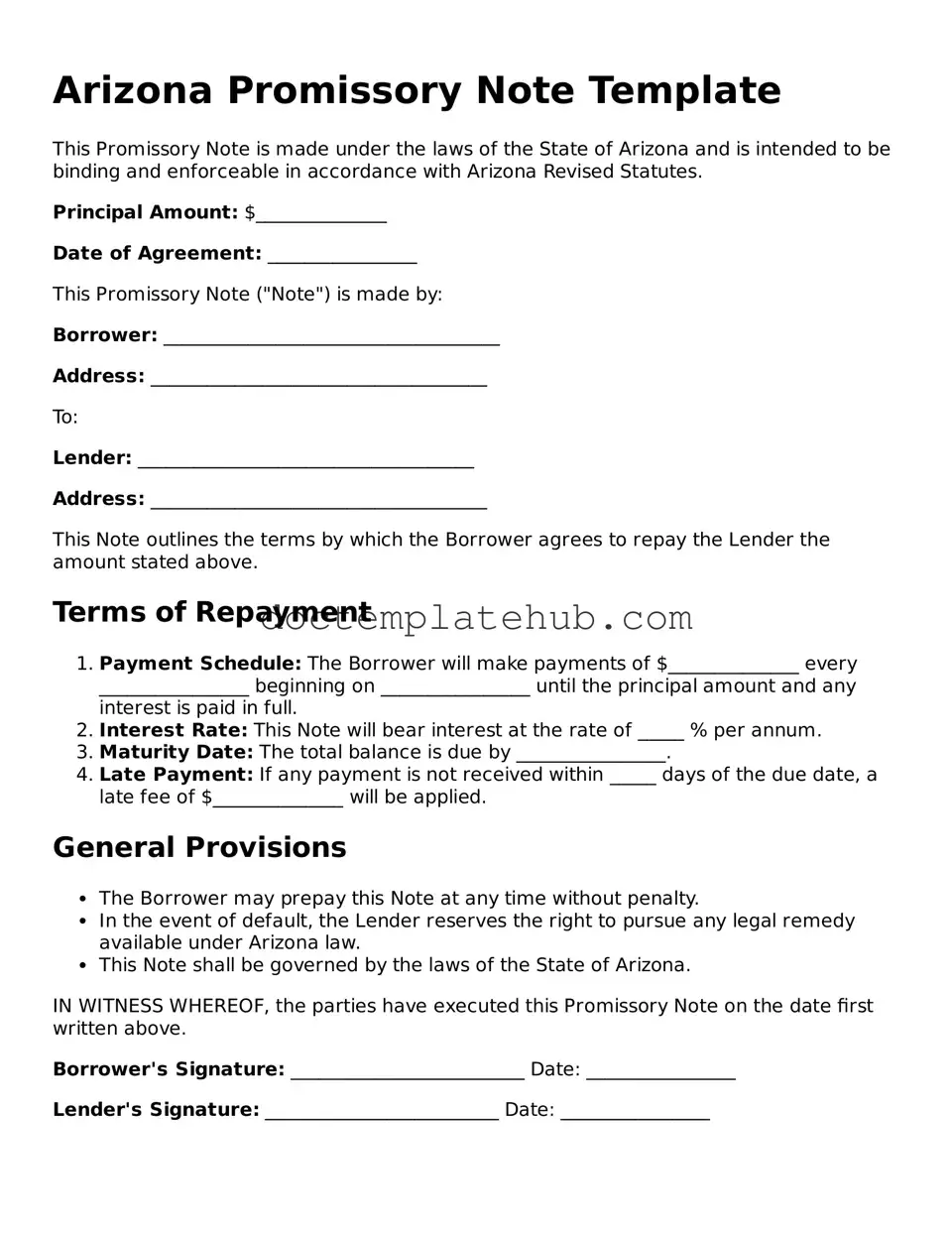What is a promissory note in Arizona?
A promissory note is a written promise to pay a specified amount of money to a designated party at a predetermined time or on demand. In Arizona, this document serves as a legal instrument that outlines the terms of the loan, including the principal amount, interest rate, repayment schedule, and any penalties for late payments. It is essential for both lenders and borrowers, as it provides clarity and protection for both parties involved in a financial transaction.
What are the key components of an Arizona promissory note?
Every promissory note in Arizona should include several crucial elements. First, it must clearly identify the borrower and lender, including their names and addresses. Second, the note should specify the loan amount and the interest rate, if applicable. Additionally, it should outline the repayment terms, such as the payment schedule and due dates. Lastly, any provisions for default, prepayment, or late fees should be included to ensure that both parties understand their rights and obligations.
Do I need a lawyer to create a promissory note in Arizona?
While it is not legally required to have a lawyer draft a promissory note, consulting with one can be beneficial. A legal professional can ensure that the document complies with Arizona laws and adequately protects your interests. If the loan amount is significant or if the terms are complex, seeking legal advice can help prevent future disputes and ensure that all necessary provisions are included.
Can a promissory note be modified after it is signed?
Yes, a promissory note can be modified after it has been signed, but both parties must agree to the changes. Any modifications should be documented in writing and signed by both the borrower and the lender. This ensures that there is a clear record of the new terms and helps avoid misunderstandings down the line. Verbal agreements regarding modifications are generally not enforceable, so it is crucial to put any changes in writing.
What happens if a borrower defaults on a promissory note?
If a borrower defaults on a promissory note, the lender has several options. Typically, the lender may attempt to contact the borrower to discuss the situation and seek a resolution. If the borrower fails to respond or rectify the default, the lender may pursue legal action to recover the owed amount. This could involve filing a lawsuit or seeking a judgment against the borrower. It is important for both parties to understand the consequences of default and to communicate openly to avoid escalation.
Is a promissory note enforceable in Arizona?
Yes, a properly executed promissory note is generally enforceable in Arizona. As long as the note meets the legal requirements and both parties have signed it, it can be upheld in a court of law. However, if there are issues such as fraud, duress, or a lack of capacity, the enforceability may be challenged. To strengthen the enforceability of a promissory note, it is advisable to keep thorough records of all communications and payments related to the loan.
